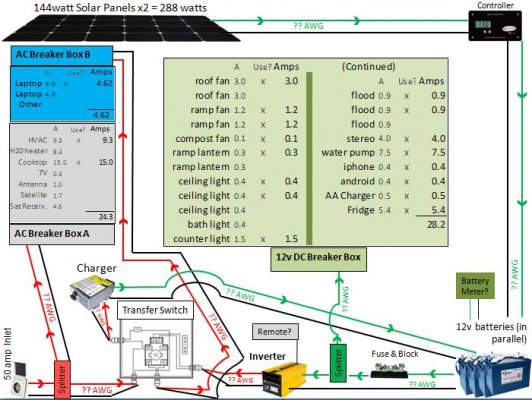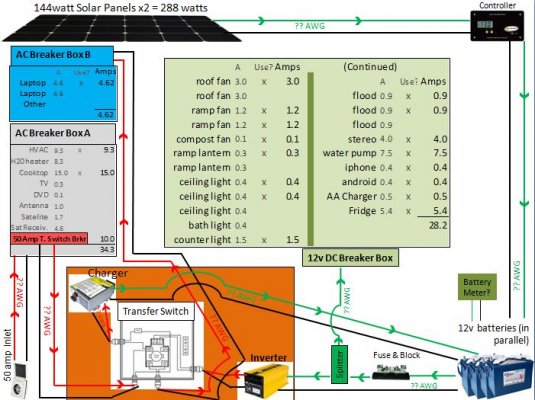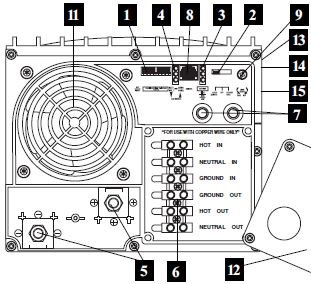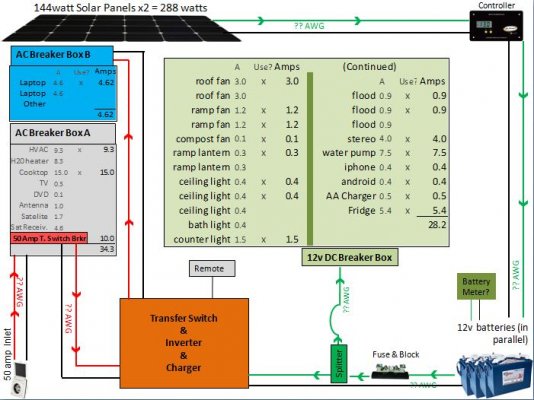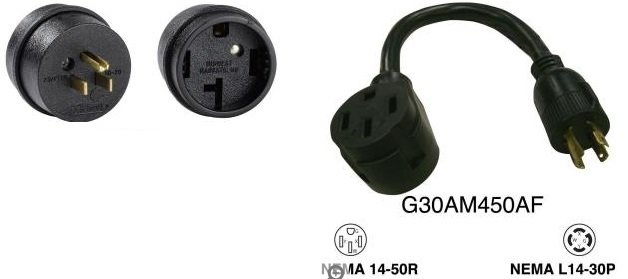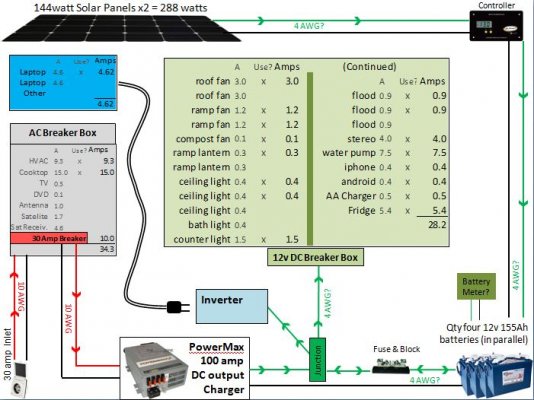First post: I am not an electrician by any means, but I am loosely diagramming my electrical setup in my new camper (picture attached). I am patting myself on the back for making this diagram look good/ readable, but the praise stops there. Does this plan actually function? It is not too different from one I emulated at http://gpelectric.com/files/gpelectric/images/applications/How_Solar_Works_with_RV_by_Go_Power.png. I was hoping you guys could take a quick look at this and tell me if I am going to fall flat on my face in some way. 2 questions come immediately to mind:
1) Do the green and pink "splitters" (or junction boxes) near the bottom of picture work? For the green 12v splitter, my intention is to bypass the inverter since many appliances (in light green) are 12v, and you lose efficiency through inverters. For the pink splitter, I want certain appliances only available when plugged into shore power.
2) Even though many websites have drawings similar to this, I feel like I am missing something at the battery connections. Can I be charging the batteries while using them at the same time?
Thanks for any thoughts!
1) Do the green and pink "splitters" (or junction boxes) near the bottom of picture work? For the green 12v splitter, my intention is to bypass the inverter since many appliances (in light green) are 12v, and you lose efficiency through inverters. For the pink splitter, I want certain appliances only available when plugged into shore power.
2) Even though many websites have drawings similar to this, I feel like I am missing something at the battery connections. Can I be charging the batteries while using them at the same time?
Thanks for any thoughts!

